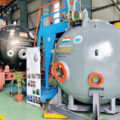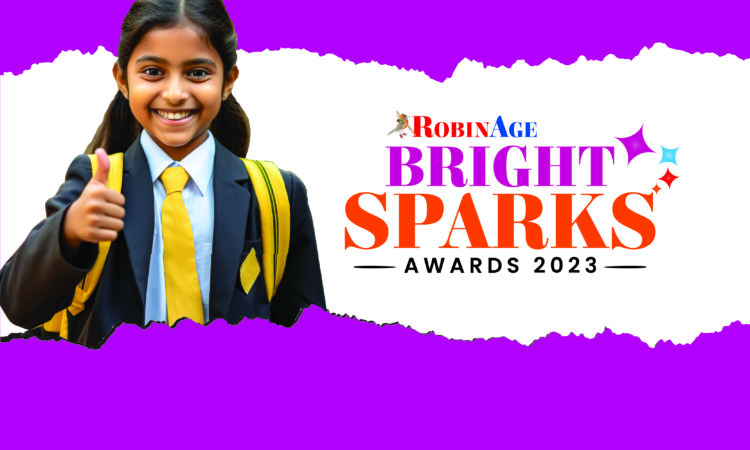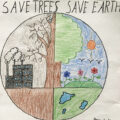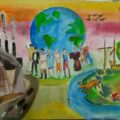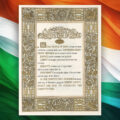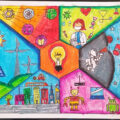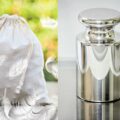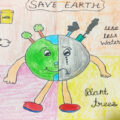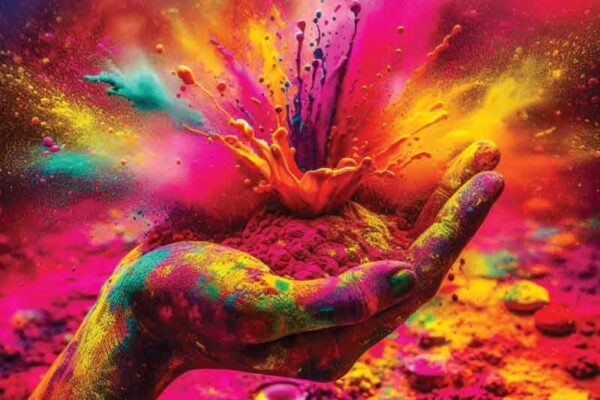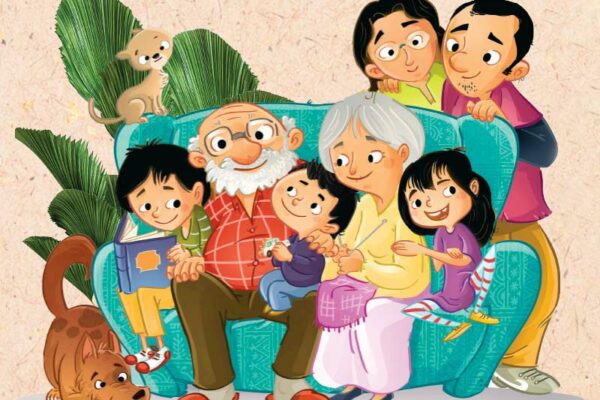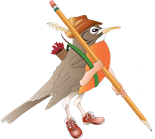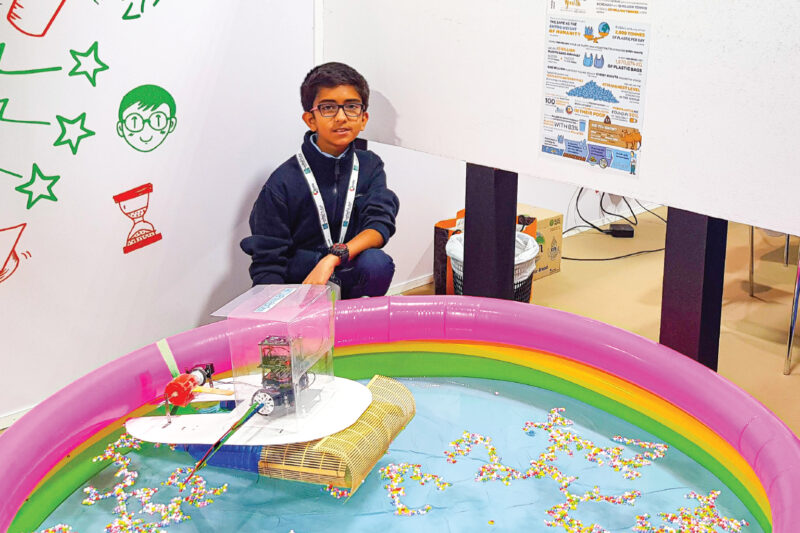
May 01, 2021
What inspired you to create the marine cleaner robot (M-Bot)?
When I visited my hometown, I was really shocked to see heaps of plastic and waste littered all over the place. I started to wonder that if this were the status of one city, what would be the amount of plastic waste lying strewn across the world? Also, during a campaign launch I attended at that time, I watched a documentary film called, ‘A Plastic Ocean’. That was a real eye-opener as I started to understand the problem of plastic pollution and how marine species ingest plastic and then, in turn, we ingest them. Plastics are not our body’s best friend. These incidents inspired me to create the marine robot cleaner to support United Nations Sustainable Development Goal 14 (UN SDG 14) – Life Below Water.
How did you build this robot and how does it function?
M-Bot Cleaner was innovated to provide vital protection (in a sustainable manner) to marine habitats as it removes waste from the surface of water bodies. The purpose of the project was to preserve our marine environment. The boat-shaped bot is operated remotely using radio control. It runs on three motors— two help the boat move in the water and a third motor pushes the waste from the water body into a storage basket. This prototype can also be fitted with a rotatable wireless camera, which can help the controller of the boat navigate the machine from a distance.
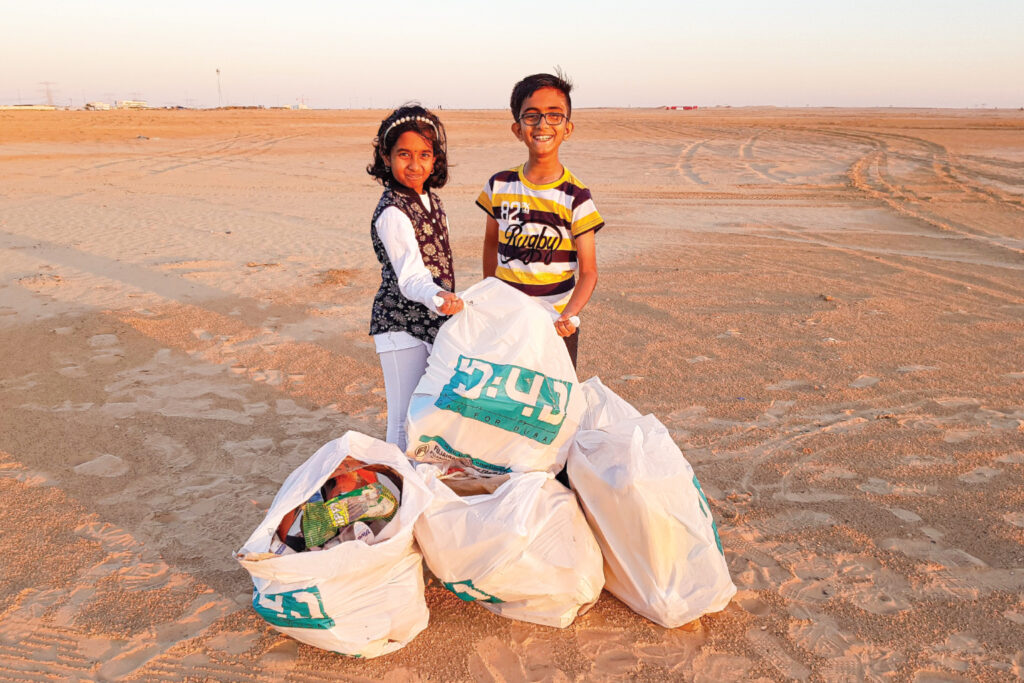
Tell us about the app you created.
The purpose of my Plastic Cleaner (PC) App is to clean microbeads as well as plastic pieces that are floating on the water surface so that we can preserve our marine environment. The app is designed to automatically send start and stop signals to the M-Bot Cleaner. As soon as the signal from the app reaches the nearest M-Bot Cleaner, it moves to that particular location in the ocean or river to collect the plastic waste. Once the water surface is cleaned completely of plastics and microbeads, the app will send a stop signal to the M-Bot to stop its cleaning process.
How do you intend to build the M-Bot on a larger scale?
I am in touch with the UAE government and private entities to build my prototype on a bigger scale. I built my first bot using recyclable materials and my robotic kit. I hope to better the bot by adding a rotatable wireless camera and a sensor that will sense whether the water is clean of wastes and send a signal to the robot to stop the process. I would also like to replace batteries with solar panels and add a global positioning system (GPS) for navigational purposes.
What are the other robots and apps you have created?
Agribot is an agricultural robot used to assist farmers in ploughing land, sowing seeds and covering seeds with soil. This focuses on UN SDG 2 – Zero Hunger. This robot will greatly benefit farmers as it is easy to control and can be programmed as per farmers’ necessities.
Agribot Control App (AC) App helps farmers in hot countries like UAE. It is designed to minimise labour and increase speed and accuracy. The app works in sync with Agribot and will help farmers control, research and analyse the input and output with regards to marketplaces, prices and other materials required for farming to maintain sustainability in agriculture.
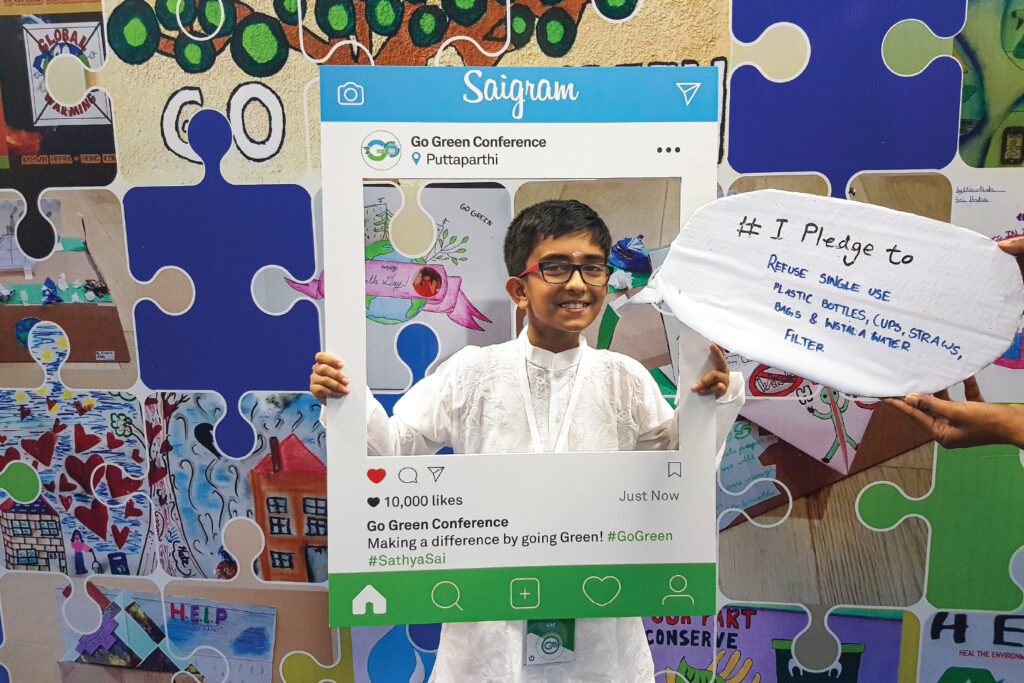
Can you tell us about the organisations you are a part of?
I have been a member of the Emirates Environmental Group (EEG) for the past three years. It is a professional working group that is devoted to protecting the environment through education, action programmes and community involvement.
My school’s environment club aims to inspire and take action to create better solutions to protect the future of nature. I am trying to adhere to one of our school’s core values, which is global citizenship.
Drop It Youth (DIY) is an initiative launched by Goumbook in the UAE in May 2016 to get the local business community to re-think their consumption of single-use plastic by switching from bottled water to filtered tap water. Goumbook aims to empower young individuals aged from 11 to 22 years to campaign against single-use plastic pollution in their class, year group, school or larger community.
My sister Sai Sahana Manikandan and I are ambassadors of the DIY campaign. We raise awareness in our school and community by giving pep talks and presentations.
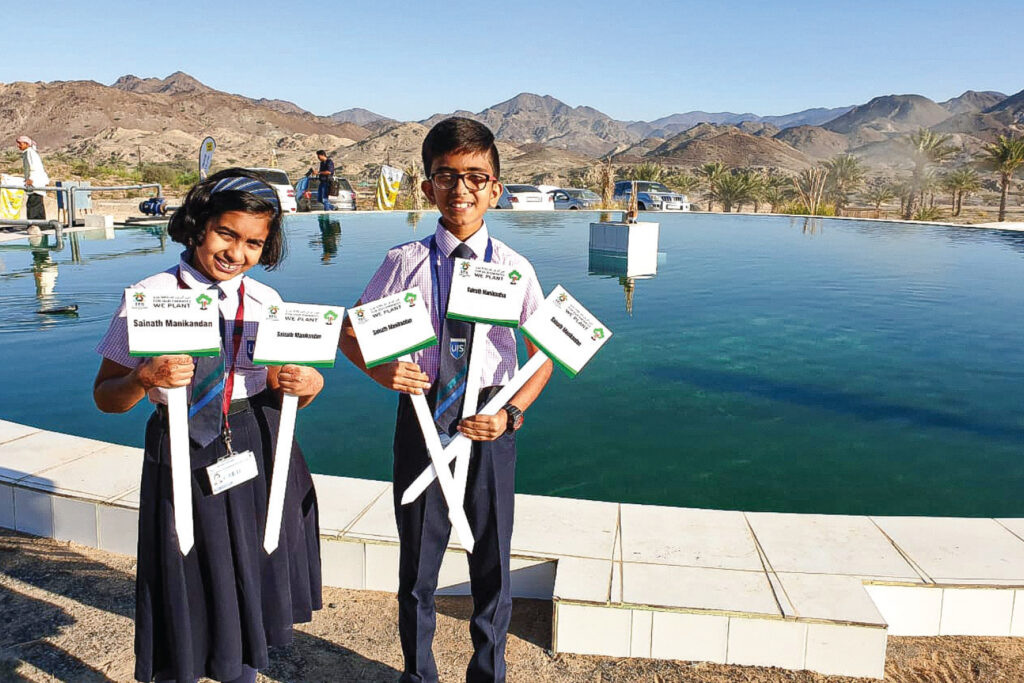
What are your other hobbies?
My hobbies include robotics, drawing and painting, karate (martial arts) and playing the keyboard. I also raise environmental awareness through my artworks.
Tips for RobinAgers to reduce their use of plastic products:
- Carry a reusable water bottle.
- Refuse single-use plastic food packaging.
- Refuse single-use plastic spoons, straws, plates and cups.
- Carry your own shopping bags made of cotton or jute.
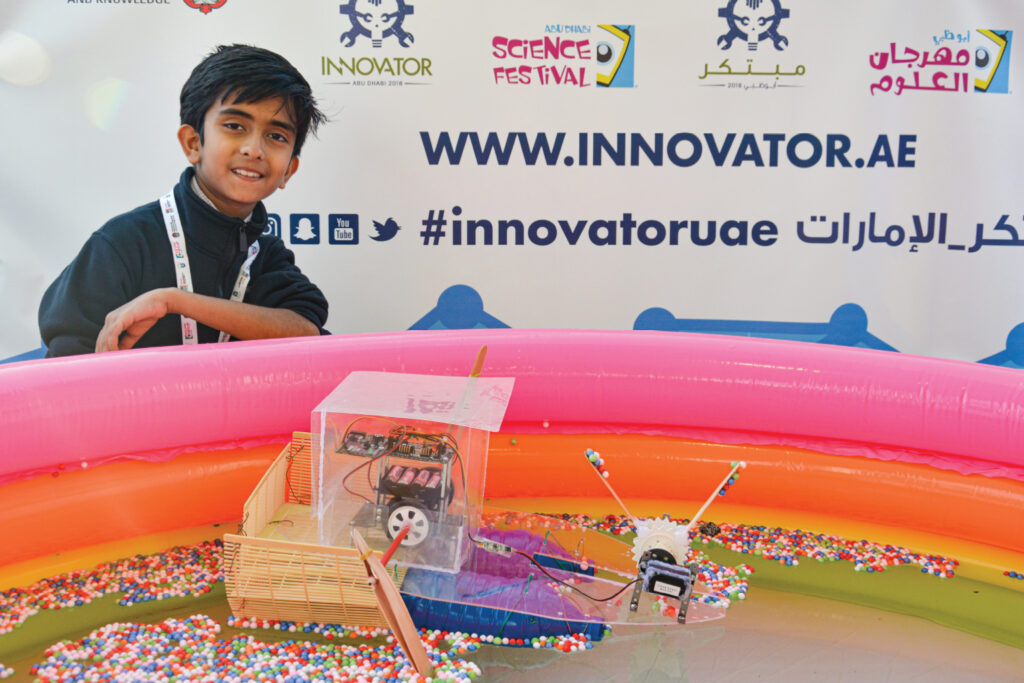
Environmental awards won by Sainath
- Actions for Nature Eco-Hero Award 2019
- Diana Award 2018
- John Muir Youth Conservation Award 2019
- UNEP Hidden Eco-Hero Award – finalist
- North American Association of Environment Education – winner 2020
- Kids Rights Action Developer Award 2020
- Future Entrepreneurs Award – winner for innovations
- Bee’ah Environment Excellence Award – outstanding individual category
- Citizen Entrepreneurship Competition – 2nd place
- United Arab Emirates IT Marathon – 2nd place
- Global Innovation Challenge – finalist
- GESS: Ambassador for the Environment – finalist
- Pride of Abu Dhabi Award – special recognition award
- Emirates Environmental Group Drawing Competition – winner
- UN Youth Climate Summit invitee
- Featured in UNEP story






